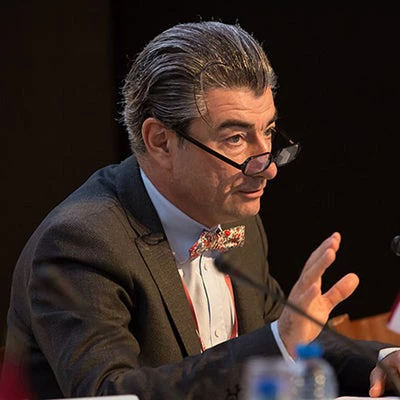
Today the world is celebrating “One Health Day.” Sometimes great ideas appear simple, even intuitive: the One Health concept was created to demonstrate that the health of people and animals are interconnected, and that these are in turn, inextricably bound to the health of the environment on which all life depends.
Why is this important? Take Rift Valley Fever (RVF), one of the many infectious diseases that illustrate the importance of the One Health approach. RVF is a highly contagious viral infection that affects cattle and small ruminants like sheep and goats. When transmitted, the disease can severely affect human health, and can sometimes be fatal. Modes of transmission include direct contact with infected tissues, including blood of infected animals, or a mere mosquito bite. The disease has strong seasonal patterns, lying dormant for long periods followed by sudden upticks when the rains come and excess moisture helps mosquitoes to breed. Such surges risk the lives of cattle, herders and farmers alike.
One of these RVF flare-ups happened in late August this year in Niger, West Africa. The disease appeared in the Tahoua region and spread rapidly to 28 villages from three communes bordering Mali and Algeria. Countries in East Africa had been warned about the increased risk of RVF mainly due to the El Niño event. From August 2 to September 22, 64 human cases were recorded and the disease killed 23 people, all of which were avoidable deaths had mosquito control, livestock vaccination, and human protective measures been taken. However, since only severe cases are officially registered, the numbers are conservative and represent the proverbial tip of the iceberg. Further ripple effects are reduced trade, decline in production of meat and milk, closure of cattle markets, loss of draft power, and bans on livestock movement to name just a few. Jobs are lost, unemployment increases and poor people are hit hardest.
A previous 2007 Rift Valley Fever outbreak in Kenya cost $32 million -quite a toll, especially to local communities. Nothing compared, though, to the SARS outbreak of the early 2000s (US$30-50 billion), the H5N1 influenza in the 2005, or the H1N1 influenza crisis of 2009s; of course, all these numbers pale when compared to the human, economic and social toll of the Ebola crisis that struck western Africa in 2014-2015. Preventing future pandemics and epidemic threats cost-effectively will require worldwide investments in human and veterinary health services.
Of course, being able to respond to and contain pandemics in a timely manner is essential for sustainable development. Albert Camus said it best, “There have been as many plagues as wars in history; yet always plagues and wars take people equally by surprise.” Recognizing the gravity of threats posed by pandemics, we need to be better prepared and agile at developing quick responses to tackle emerging threats effectively.
However, there are more than high-profile pandemics that warrant action. Brucellosis, rabies, Lassa fever, leptospirosis and tuberculosis, for example, are among well-known infectious diseases having their sources in animals. Those diseases more rarely make headlines. However, globally, only 13 of these zoonotic diseases are together responsible for the deaths of 2.2 million people and 2.4 billion illnesses each year. The vast majority occur in low- and middle-income countries. Those diseases present a major obstacle to our development efforts.
The World Bank has been an early adopter of “One Health” as a collaborative approach for strengthening systems to prevent, prepare, and respond to infectious diseases and related issues such as antimicrobial resistance that threaten human, animal and environmental health. Years after the avian flu crisis, the Bank continues to promote integrated approaches including through initiatives like REDISSE.
Celebrating One Health Day is a good way to recognize the interconnectedness of things and the continuing need for transformative approaches to solving critical global health challenges concerning human-animal-ecosystem interfaces.
Related
Press Release: By 2050, drug-resistant infections could cause global economic damage on par with 2008 financial crisis
Infographic: Drug Resistant Infections: A Threat to Our Economic Future
Publications: Drug-Resistant Infections: A Threat to Our Economic Future


Join the Conversation